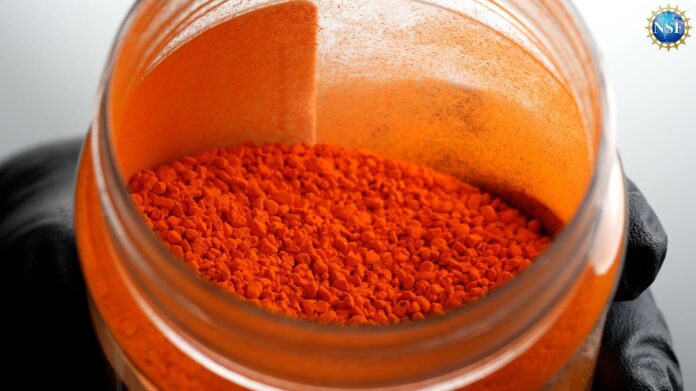
Food coloring is usually used to color things – researchers have now used it to make skin transparent. They applied a yellow-orange color to the skin of mice and were thus able to see the blood vessels in the scalp or the movement of organs under the abdominal skin. The process could probably also be used on humans and is conceivable for many medical areas, writes the team from the US University of Stanford in the journal “Science”.
The synthetic dye used, called tartrazine, absorbs long-wave ultraviolet light (UV-A) and blue light. Red and orange light can penetrate the tissue. The researchers write that the transparency effect works on skin, muscles and connective tissue. The dye can be washed off with water after the experiments, which makes the skin opaque again. The substance also does not harm the animals.
Just don’t try it on people
Tartrazine (E 102) is approved in the USA and the European Union. The colorant is used in baked goods, sweets, mustard, cheese and medicines, for example. It is also used in the color powders used in Holi festivals.
The team has not yet tested the dye on humans. Co-author Guosong Hong, assistant professor of materials science and engineering at Stanford, explains that the application is also more complex than in mice. “Human skin is much thicker.” The outermost layer of the epidermis represents a significant barrier, meaning that the molecules cannot effectively penetrate the dermis.
The dye would actually have to be injected into humans – but this would first have to be thoroughly tested and evaluated in terms of safety. The researcher believes that under no circumstances should anyone simply use the freely available dye on humans. “We strongly advise against trying this on human skin, as the toxic effects of dye molecules on humans, especially when applied externally, have not yet been fully investigated.”
A splash of color to look inside the body?
But Hong believes that the dye could eventually find application in medicine. “In the future, this technology could make veins more visible for blood sampling, simplify the removal of tattoos using lasers, or help with the early detection and treatment of cancer.” It may also be possible to locate cancer cells and precancerous lesions under the skin in order to remove them using lasers.
To research transparency, the Stanford team focused primarily on the scattering and refraction of light when it passes from one material to another. Scattering is the main reason why we cannot normally see through the body: cells, proteins and other materials all have a different refractive index. This means that when light passes from one material to another, it is refracted, or scattered, to different degrees.
Physical effect
The researchers tried to find a way to adjust the different refractive indices so that the light is not scattered so much. The idea: dyes that absorb light most effectively could also adjust the refractive indices particularly effectively. The researchers identified tartrazine, also known as FD & C Yellow 5, as being particularly effective.
When they dissolved tartrazine in water and added it to tissue that absorbed the dye, the light scattering was reduced, resulting in transparency. They first tested this on a thin slice of chicken breast. As the concentration of the dye increased, the muscle cells became more transparent. An image that they had placed under the glass dish with the chicken became visible.
View of the intestine and heart
The researchers then rubbed the solution into mice. The scalp became so transparent that the blood vessels in it became visible. They also applied the solution to the stomach of the mice, where within minutes the movements of the intestines as well as the heartbeat and breathing became visible. The researchers suspect that an injection of the dye could lead to even deeper insights into the organisms.
© dpa-infocom, dpa:240905-930-224400/1
This is a message directly from the dpa news channel.
